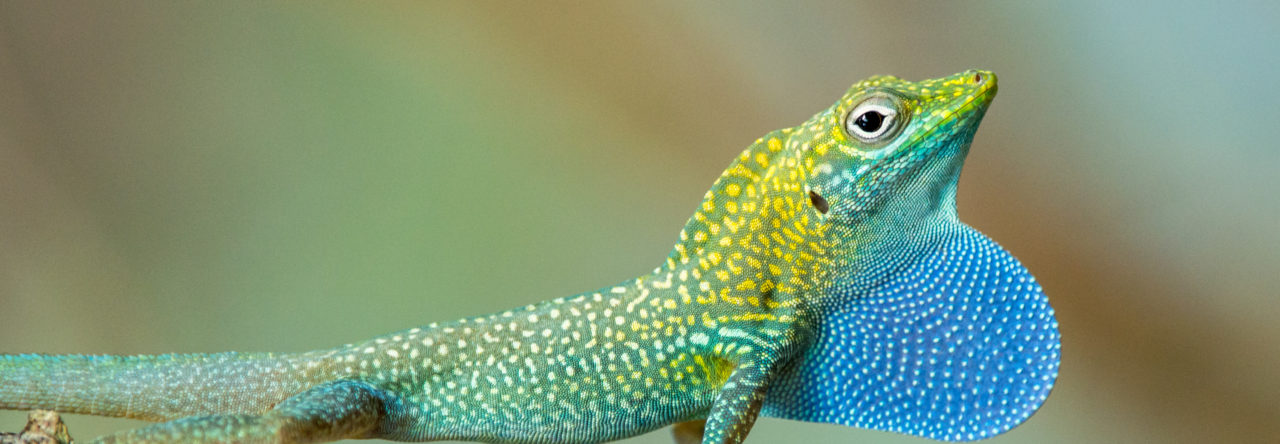
Hi Anole Folks,
So life transported me to South Florida to beat Cancer, and looks like I have made good progress, thank you in advance. 🙂
As a general naturalist, I get out A LOT, each day- up to three hikes in different habitats.
In my area on the border of Broward and Palm Beach Counties, there are several restored Pine-Lands, some from about 1984- most cordoned off in a way for even longer due to central farm use, cattle grazing, or logging with left over islands near the wetter areas.
I spent a lot of time in the late 70’s in Coral Gables, Florida- with a two year stint at the U. of M. At that time, Anolis carolinensis, while not common, could be found on buildings on Ponce de Leon Blvd. and also areas of Bird Road, LeJeune and others behind the U of M arboretum. I also would find both A. porcatus and A. chlorocyanus at these locations. Anolis sagrei was always in great numbers no matter what.
Returning NOW, in 2014- with extensive field searching, failed to find Anolis carolinensis. The typical haunts I’d expect–along homes, in bushes, on trees, and in scrub–failed to yield a single animal. I put in a lot of effort. I found A. porcatus, A. equestris, what I think is A. cristatellus, and every morph you can think of of A. sagrei. I also found Curly Tails living sympatrically with A. sagrei in several pockets. This I found pretty neat and worthy of some work.
Recently, while hiking a Wet Prairie, along a Cypress Marsh near a domed swamp area, I started to see a very thin green lizard perched atop grass stalks–and very often cattail stalks in the center of the wetland, over standing water. I could not confirm the species–they were far into the swamp and their flushing distance was ASTOUNDING. They would see me and DROP clear to the grass below. One time I saw an individual turn brown in seconds, and disappear, not into tree branches, but into the grass on the ground! I watched this behavior 8-9 times before I knew–I had to hike into the swamp. So I did.
 Eventually I was able to see males and females, of what now I was sure was A. carolinensis hunting and using the grass/cattail stalks for feeding and display. In the attached image, you will see one on cattail, and this is a typical daily encounter. I could see five or more in a hike, on the tops of grass stalks near the seed heads. While bushes and peripheral trees were there, they were not using this substrate. I really was seeing a marshland native Green Anole group. And to my eyes, this group was rather “gracile” in form. And they worked the stalks in what seemed to be a new fashion. I even imagine–since I have not done any morphometrics yet–that their hind legs look longer, tibia/fibula and femur, and toes. They also have a posture for most of their time on the stalks that is not something I was used to seeing–legs held way back and tight to the body, as if to reduce their profile. A thin Green Anole, that can hide on a grass blade :-). The images here represent two separate anoles from two separate days.
Eventually I was able to see males and females, of what now I was sure was A. carolinensis hunting and using the grass/cattail stalks for feeding and display. In the attached image, you will see one on cattail, and this is a typical daily encounter. I could see five or more in a hike, on the tops of grass stalks near the seed heads. While bushes and peripheral trees were there, they were not using this substrate. I really was seeing a marshland native Green Anole group. And to my eyes, this group was rather “gracile” in form. And they worked the stalks in what seemed to be a new fashion. I even imagine–since I have not done any morphometrics yet–that their hind legs look longer, tibia/fibula and femur, and toes. They also have a posture for most of their time on the stalks that is not something I was used to seeing–legs held way back and tight to the body, as if to reduce their profile. A thin Green Anole, that can hide on a grass blade :-). The images here represent two separate anoles from two separate days.
Did the pressures of habitat loss, A. sagrei competition, and A. equestris predatory pressure, isolate this group and/or move them to this grassland habitat over water? Could this be a recently adapted “ecomorph” which we so timely have read about?
I will be vouchering a male and female for work at the MCZ for others that might be interested. But in the interim, my favorite interest, watching behavior, will continue.
I know all the BUTS about this- as in- are they even remnants of historical Broward animals at all? Did they come in with the replanted slash pine and pond cypress? I’m hoping one day by genetic work, and or even some new Xray work, we might be able to answer some of this. And of course, in their normal historical lives, they almost certainly used this type of habitat in part. But what about now?
That there are vigorous groups in these Wet Prairies of Broward attests to the tenacity of the species, and that it is surviving here. And that puts a smile on my face!!
If anyone would like additional information for research, and or visit the sites with me, please feel free to contact me at naturalist@gmail.com; I’ll be here for at least a few more months.
Would love any ideas, thoughts regarding this as well. More photos to come as well.
Enjoy the images.
Sincerely,
Kenneth E. Barnett






























